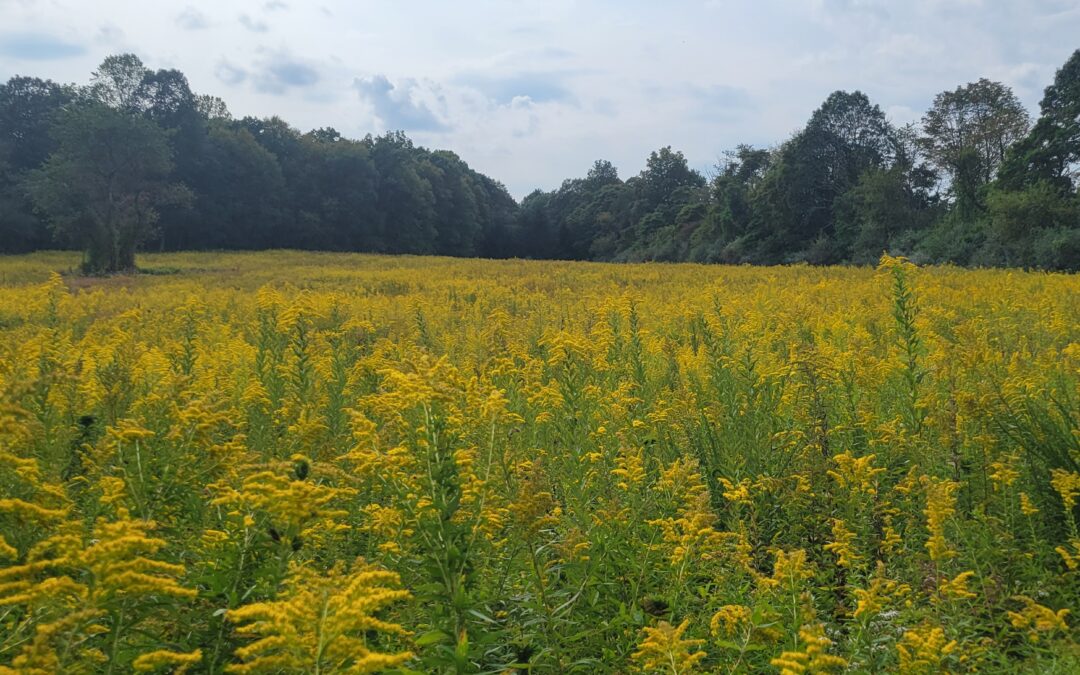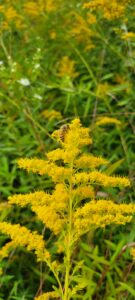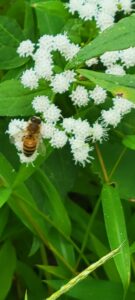With one-third of humankind’s food and even greater proportion of the food for much of our wildlife relying to some degree on pollinators, flowers that bloom late in the summer and persist into fall become critical for the survival of these important animals.
Specifically, late season bloomers provide that last sources of nectar and pollen before winter which helps pollinators, such as bees, to build up fat reserves and get energy but also helps in colony development. Basically, without these late season blooming plants insect pollinator species food storage would be depleted, making survival much harder and impacting their ability to survive colder months and emerge in good condition and be strong next spring.
Two examples of native late season blooming plants that can be found throughout Merrill Creek Reservoir (MCR) are various Goldenrod species (Solidago sp.) and White Snake Root (Ageratina altissima).
Goldenrods serve as a critical food source for migratory monarchs and native bees, which rely on the high-quality pollen and nectar to build fat reserves for winter or migration. Goldenrod also offers shelter and, later, seeds for other beneficial insects and birds, making it a keystone plant for supporting a diverse range of wildlife. Depending on the source of information, New Jersey has between 26 to 30 different Goldenrod species. At MCR we have documented 6 different species of Goldenrods: Canada Goldenrod, Blue-Stemmed Goldenrod, Early Goldenrod, Gray Goldenrod, Spreading Goldenrod, and Wrinkle-Leaf Goldenrod.
Contrary to popular belief, Goldenrod does not cause “hay-fever” or other allergic reactions to pollen as their pollen must be spread via insects and not by wind. Unfortunately, Goldenrod typically grows in areas that also tend to grow Common Ragweed (Ambrosia artemisiifolia) and Common Mugwort (Artemisia vulgaris). These two plants are “anemophilous”, or wind-pollinated, so pollen from Ragweed and Mugwort are the typical culprits that cause allergic reactions to their pollen in the air when one walks through a meadow.
White Snake Root provides late-season nectar and pollen for butterflies, bees, and moths, and serves as a food source for some moth caterpillars and other insect predators. Additionally, its foliage is generally unpalatable to deer and rabbits. Although beneficial for pollinators, White Snake Root contains a toxic alcohol called tremetol, which is very harmful and potentially fatal if eaten or can be absorbed through your skin if you touch your mouth after handling the plant.




